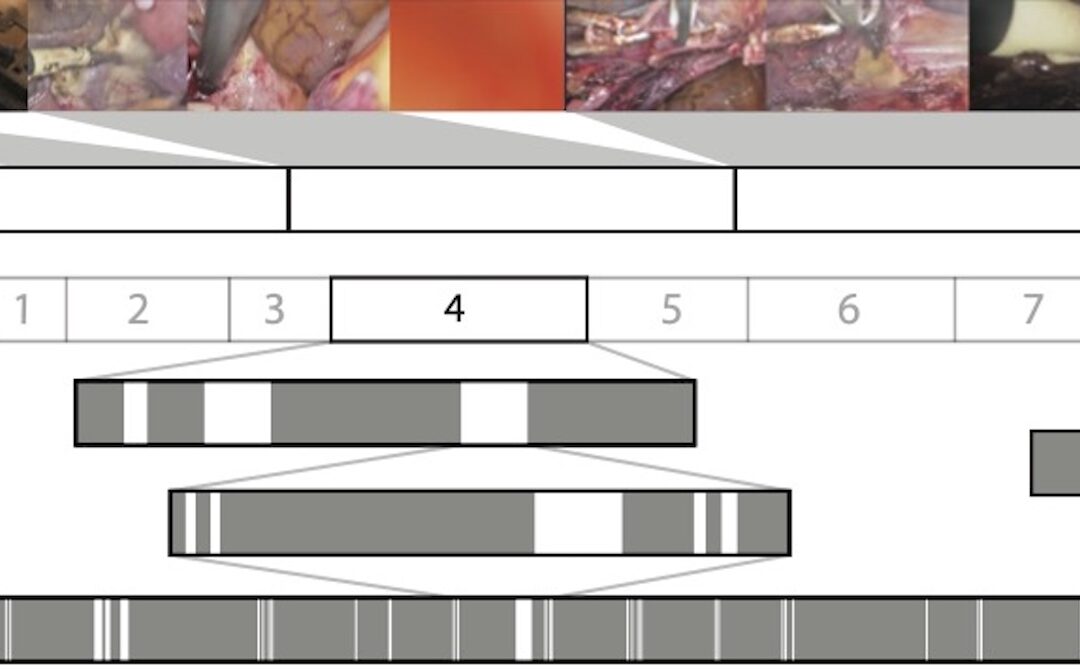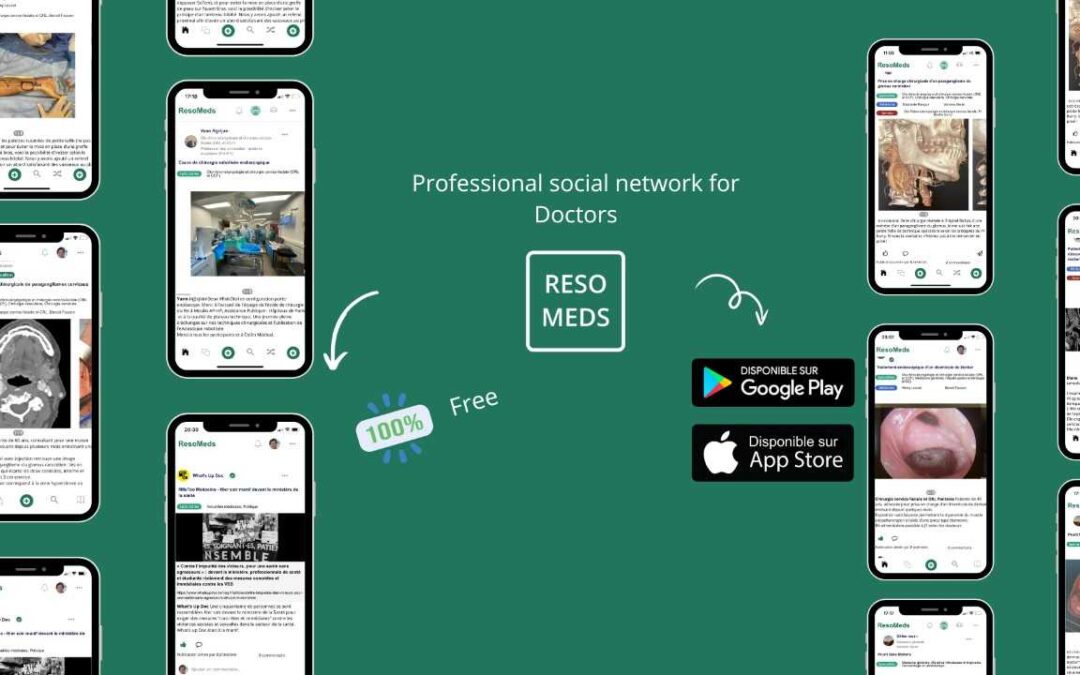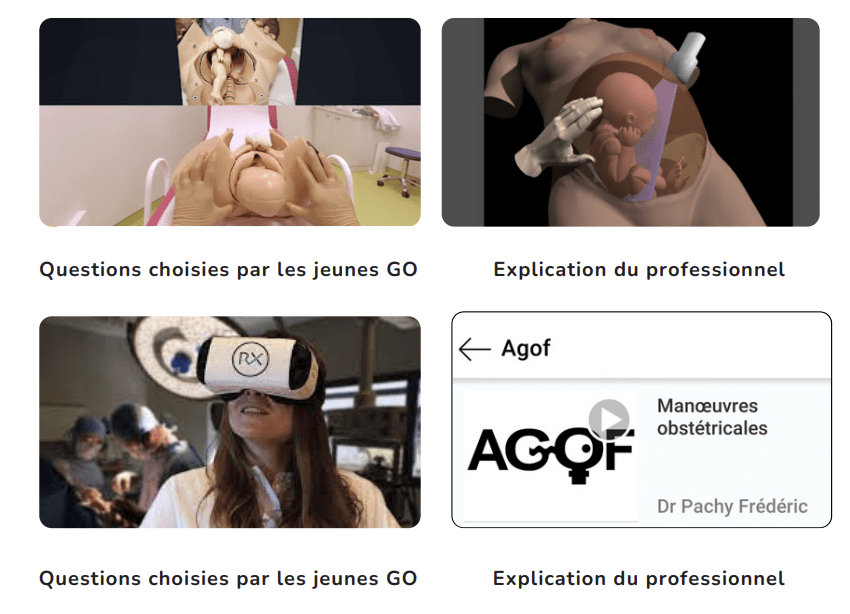Narration is important for surgical videos: directly linked to their educational potential, it helps to support the message and emphasise what is important. But good narration also requires preparation beforehand. Here’s everything you need to know about advice, best practice and basic principles.

Writer’s block
The narration must be prepared and written before it is recorded.
A surgical video is made up of pillars, each playing a didactic role. There are three of them: the images, annotations and other graphic elements, and the narration.
In our case, the narration actually takes the form of a voice-over. It provides support for the images it clarifies movements, insists on details, highlights moments of attention and delicate points to bear in mind. In short, it helps to clarify, complete and reformulate the information, for optimum teaching effectiveness.
In fact, it’s the same principle as for a news report, except that it’s applied to a different type of format.
Above all, it combines sound and visual. This helps to create a connection with the viewer, keep their interest through various forms of cognitive stimulation, and thus, encourage learning. It is also widely used for creating teasers, particularly for its dynamic and narrative side if it is well constructed.
And while recording the voiceover plays an essential role, writing it beforehand remains the basis of a successful narration. Between keys and good practices to adopt, this article is a guide to making a success of this stage, which is often considered tricky.

Storytelling
Writing the narration is the basis for creating a quality voice-over, above and beyond any other technical considerations.
A good narrative for better understanding
Before you start writing straight away, the first step is to think of the narration’s structure. Because, as we will see, the organisation of information is the basis of understanding, and then learning. All teaching aids (essays, presentations, shorts, essays) are first and foremost designed around the structuring of the message and its problem.
It couldn’t be simpler: the voiceover follows the video chapters. Since the text is supposed to clarify and enrich the information delivered by the images, there’s no need to twist your brain.
Highlighting the structure of the surgical video
So we go back to the video’s organisation, focusing on logical points, key moments and transitions, and then unfolding the message.
- In the introduction, we take the time to develop the context, explain the aim of the video, and the medical framework in which the surgery is set.
- In the development, points of interest (or chapters) are noted, images and the surgical procedure are used, and the explanation unfolds. The questions that viewers might ask serve as a common thread. What questions does the video raise? What needs to be explored?
- In the conclusion, we reiterate the key points of the video, highlighting the main message of the content. If possible, we make links with other content or open up to reflection.
Annotations, diagrams and other graphic elements are often used in surgical videos. They serve as reminders and memos. They are an advantage that should not be overlooked and should be considered when writing the narrative (for example, to avoid asynchronous appearances…).
One method would be to write the texts during a viewing of the project. This is the best way to evoke the right information at the right time. This will make the voiceover a fully-fledged element of the video, a real teaching tool, and not a last-minute addition, laid on top of a montage that has already been fully completed ” because it looks good “.
In practice: writing tips for a captivating narrative
The aim of good storytelling is to simplify the text as much as possible by streamlining the style as much as possible. Using the principles of journalistic writing, developed below, is a good starting point : on radio as on TV, journalists seek above all the interest of their audience, to keep them on the edge of their seats.
- First and foremost, you have to pay attention to the words. A voiceover should accompany, not infantilise. Here, the target audience is familiar with the medical terms. So there’s no risk in choosing precise terms instead of cumbersome, redundant periphrases.
- When writing, get into the habit of checking that you are answering, for each key moment, the journalistic 5Qs: who or what, when, how, where and why. Once you’ve answered the 5Qs, you can be sure you’ve provided enough information to understand the topic.
- Short, rhythmic subject-verb-complement sentences ensure that the information is dynamic and precise. It is also possible to use non-verbal sentences, which are even simpler in their structure.
- ” One sentence, one idea. “ This mantra is known to help journalists when writing. It’s an excellent rule for getting the most effective texts possible.
- Including the text is an excellent method for keeping the audience’s interest and making the point more accessible. By adding a comment, an anecdote, a comparison, and setting the tone as you read…
When writing, it is also advisable to regularly read the text aloud, or even to record yourself and then listen to yourself, adopting a natural flow after all, we often read faster in our heads than out loud. There are two objectives: to check that you are reading at the right speed, particularly in relation to the video; and to get your brain used to the terms and phrases used to make recording easier.

Easy to read
To make it easier to read when recording, you text can be written in a very large font size, with wide line spacing.
A well-crafted narrative
Working on the writing of your texts is already a guarantee of their quality. But a narrative is nothing if not transformed into a voice-over… and recorded.
As with writing, good practice and tips exist to guarantee the audio quality of the final voiceover, whether the person has suitable equipment or not. This guide to recording voice-overs provides keys and tips on how to get to grips with the software, for people who are new to the subject… or less of a beginner !
Finally, accompanying a voiceover with subtitles is common practice. There are two reasons for this as a textual support makes it easier to understand technical terms, in particular and they are a guarantee of accessibility, for people who are hard of hearing or whose language is not the mother-tongue, but also for those who don’t have sound at the time of viewing, which is increasingly the case for content consumed on the Internet.
Preparing and scripting your narration is also a way of simplifying your task when it comes to subtitling. Everything is already written: all you have to do is synchronise the time codes and adjust the duration of the subtitles – it’s easy!
Read more

Surgical Video Summarization: Multifarious Uses, Summarization Process and Ad-Hoc Coordination
While surgical videos are valuable support material for activities around surgery, their summarization demands great amounts of time from surgeons, limiting the production of videos. Through fieldwork, we show current practices around surgical videos. First, we...

ResoMeds: a social network sharing videos
Case reports enrich medical knowledge and training, and improve practice [1-4]. However, their publication is often limited in existing journals [5]. We aim to highlight the importance of creating a platform for physician exchange to promote peer learning, case...

Videos improve knowledge retention of surgical anatomy
In otolaryngology, a new publication shows that an educational video improves anatomy learning and knowledge retention in the long term. This study conducted by the ENT team at Necker-Enfants Malades, APHP (Université Paris Cité) and led by Pr François Simon shows the...

Surgical videos: using the most efficient medium. AGOF’s associative experience
In 2010, the French National Authority for Health (HAS) issued the famous slogan for apprentice surgeons: "Never perform surgery on a patient for the first time" (1). It is sometimes difficult for a young surgeon to accept that he or she has not received sufficient...
